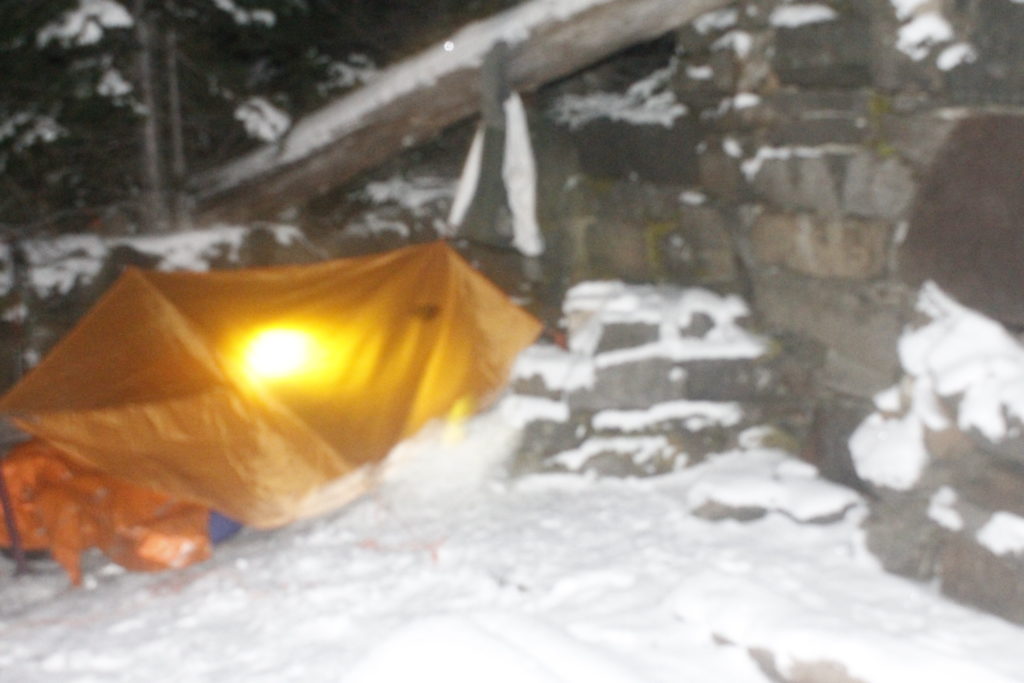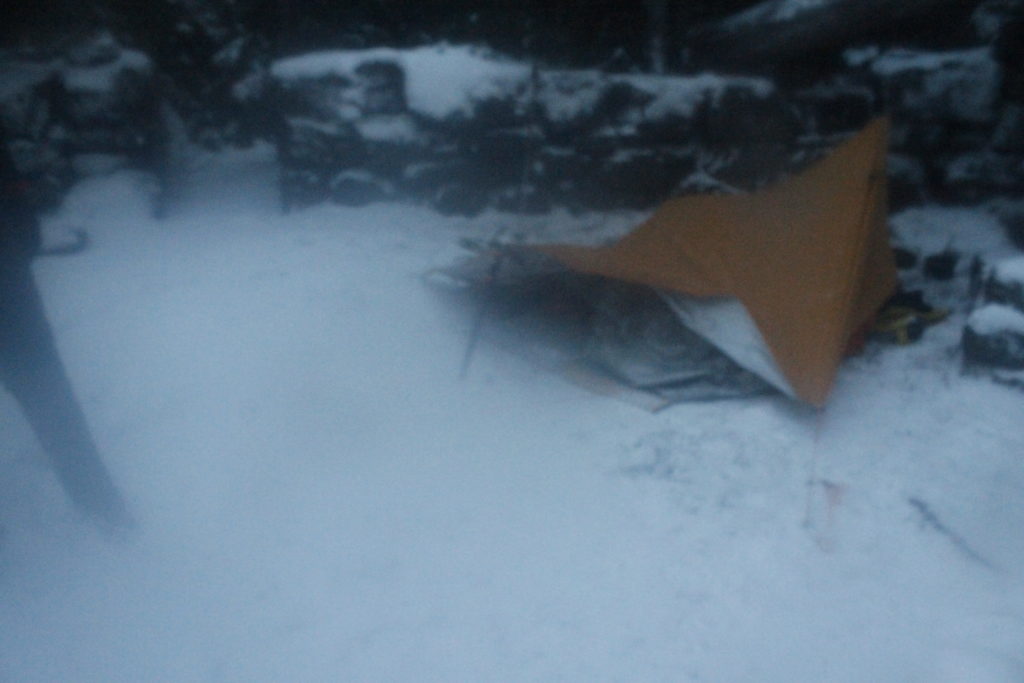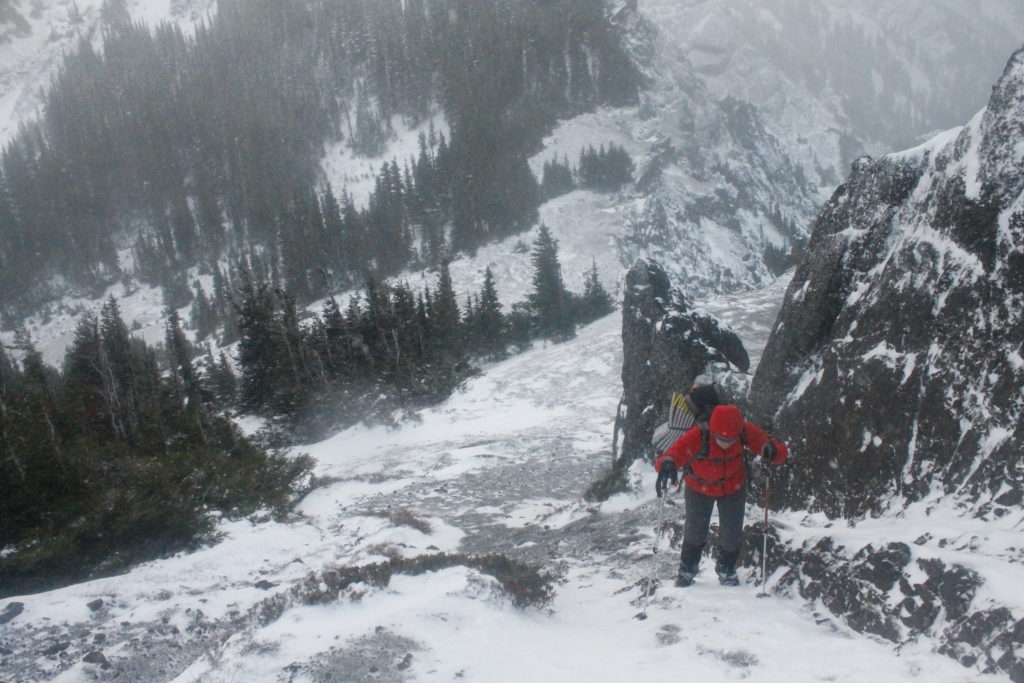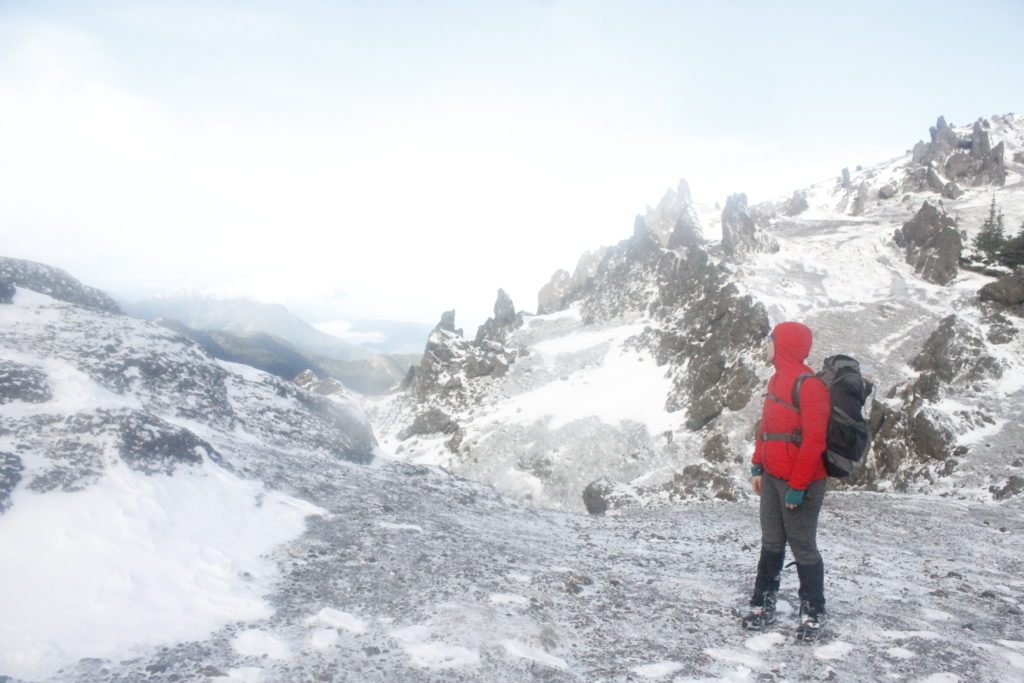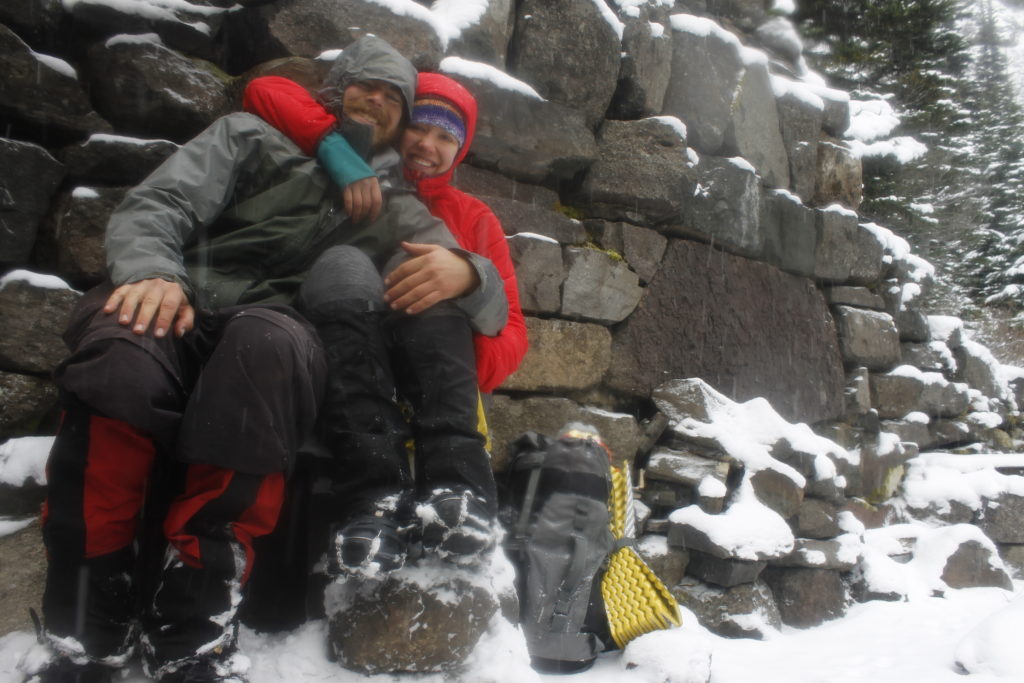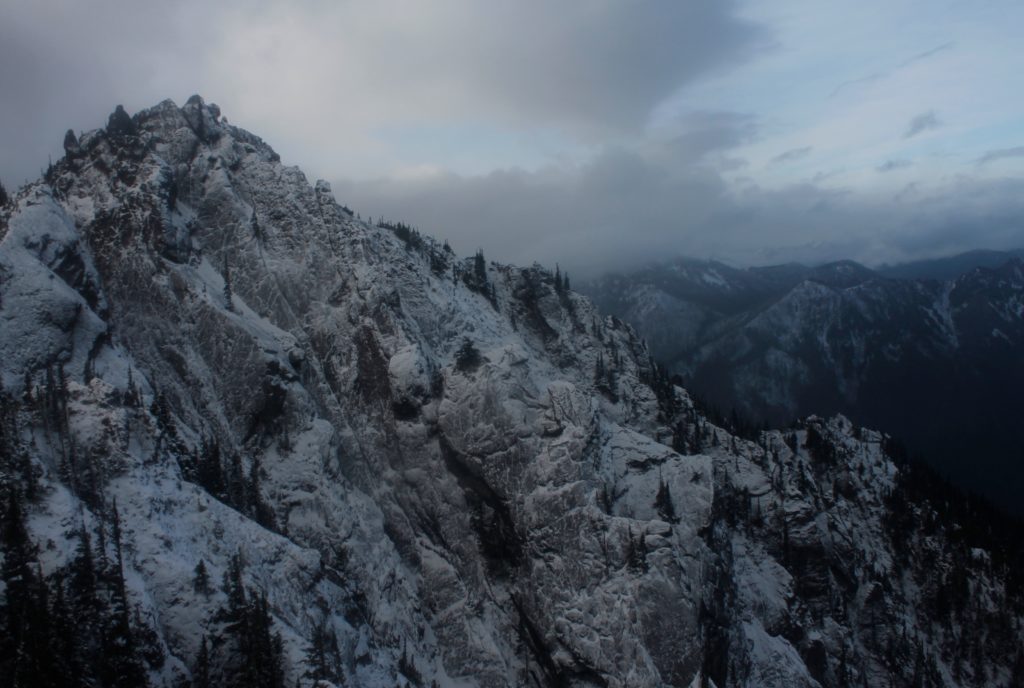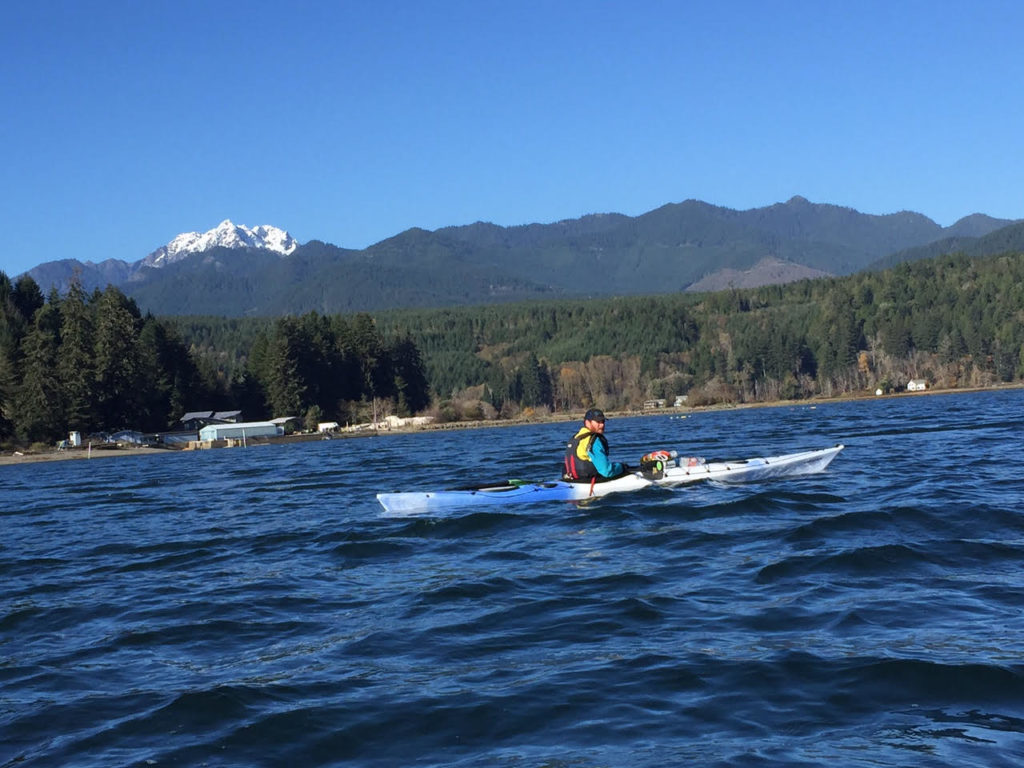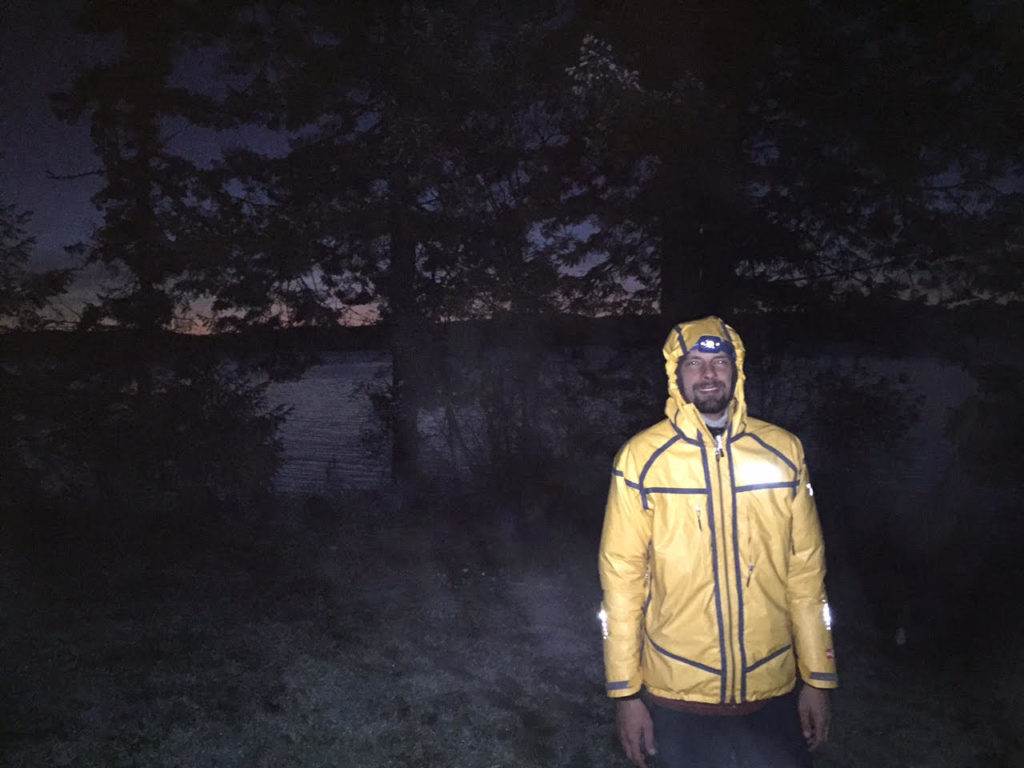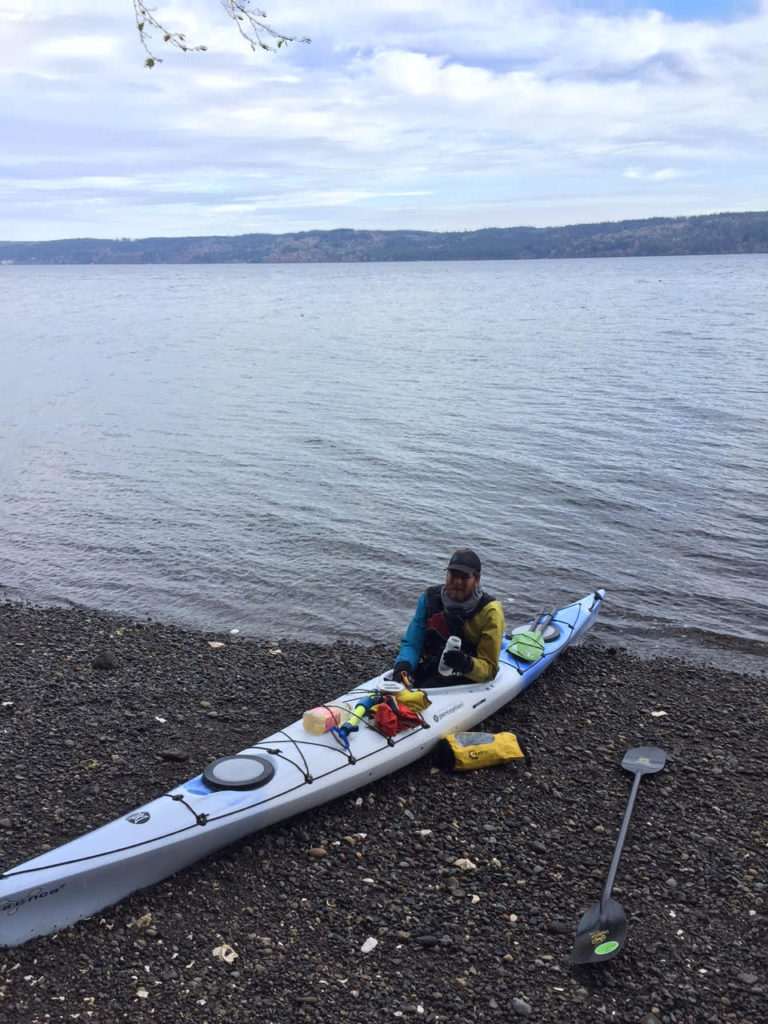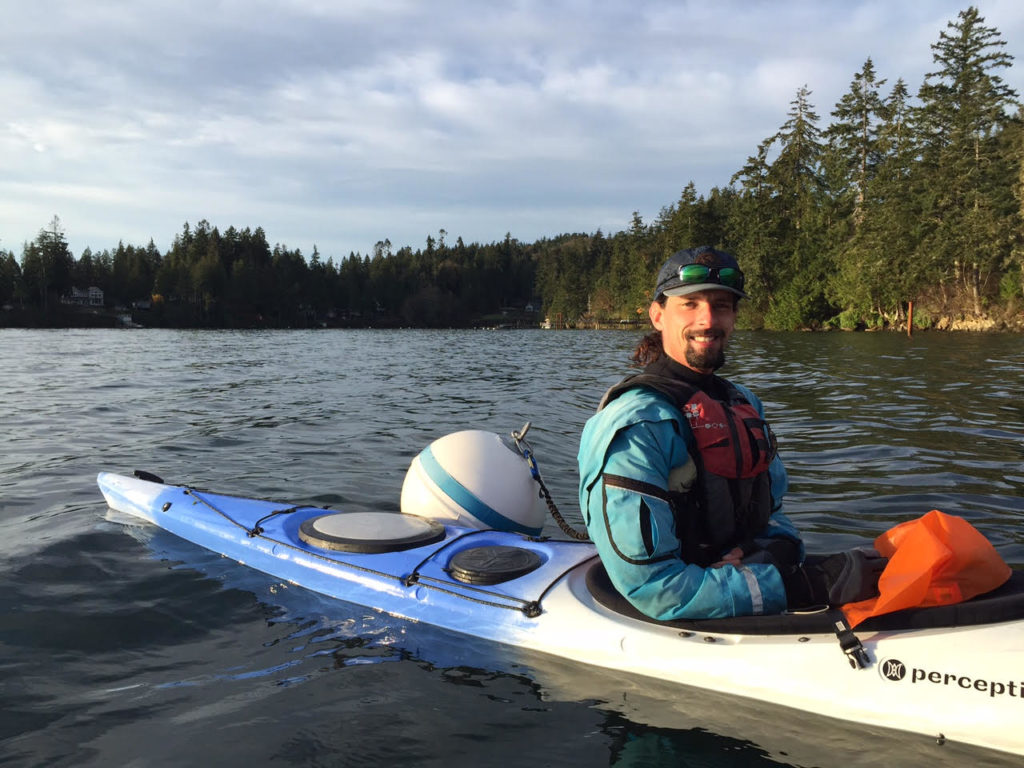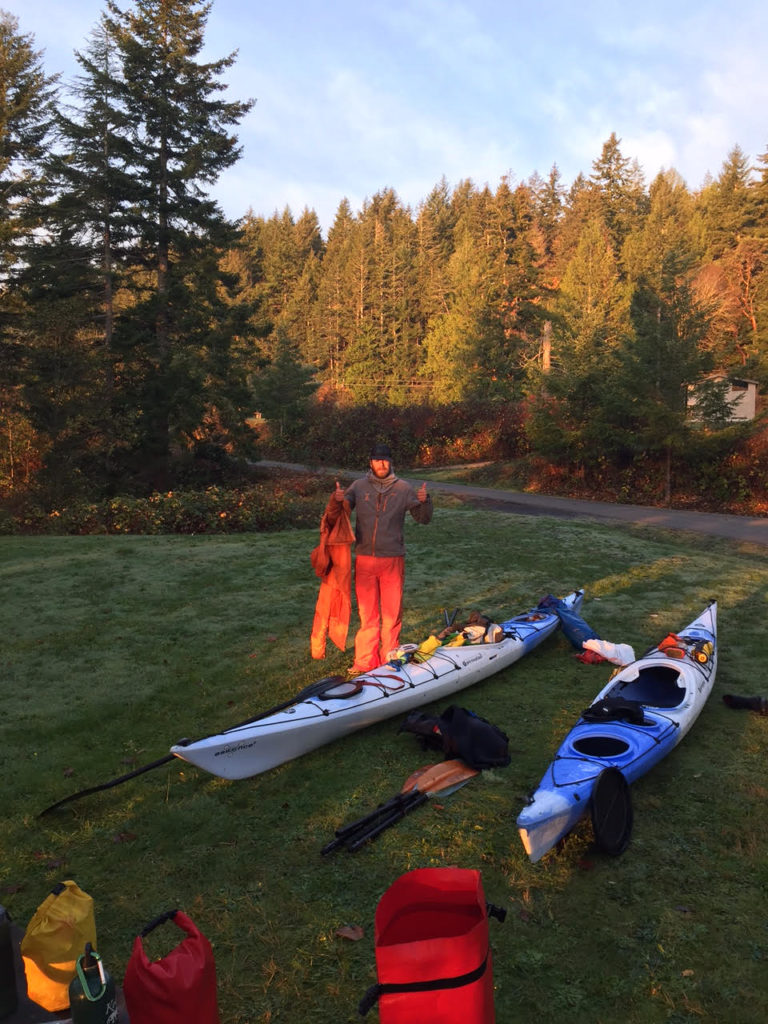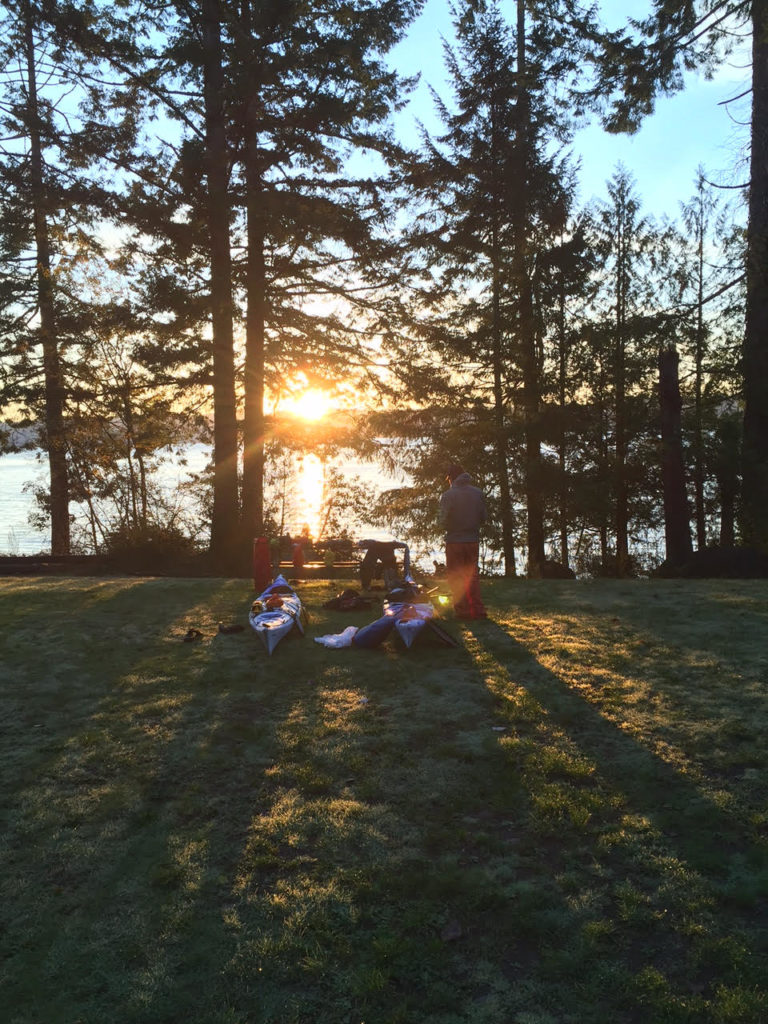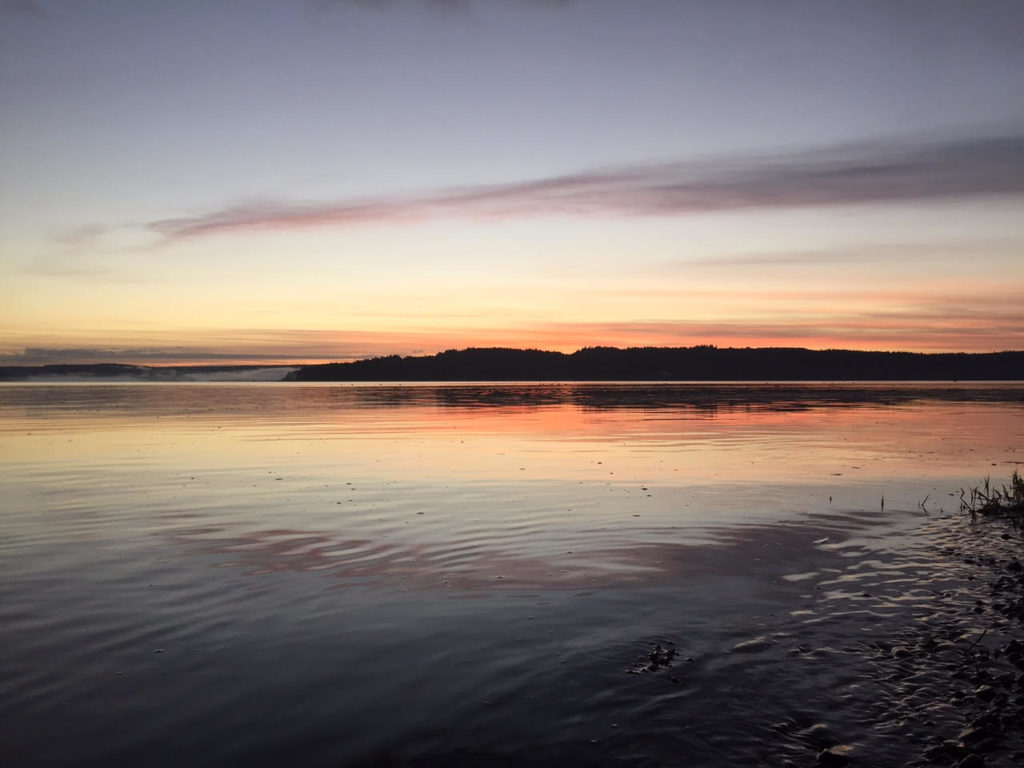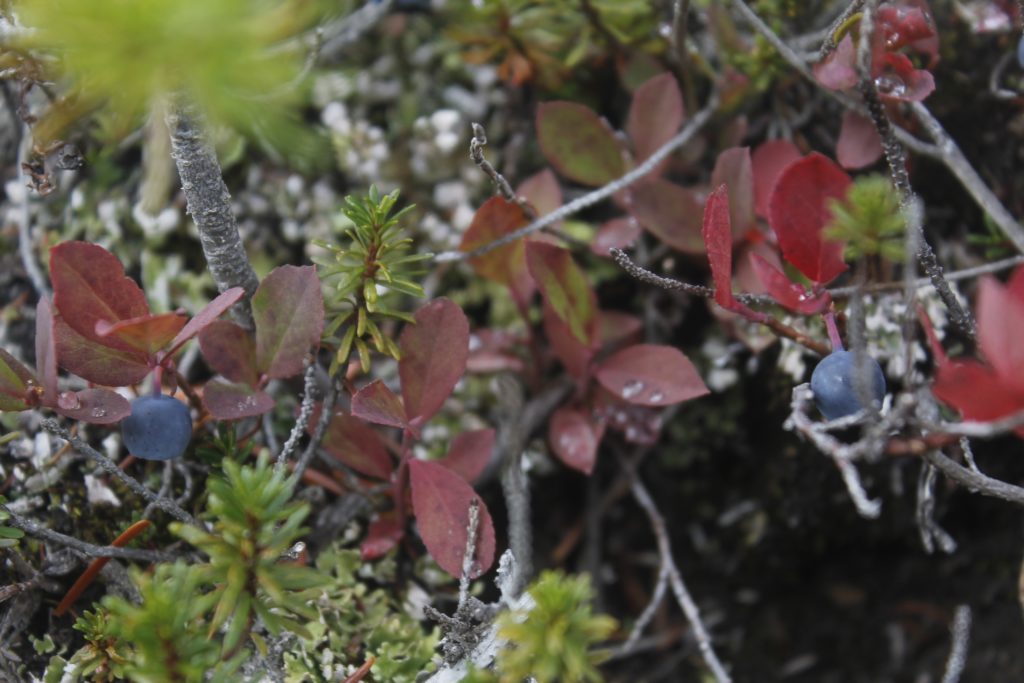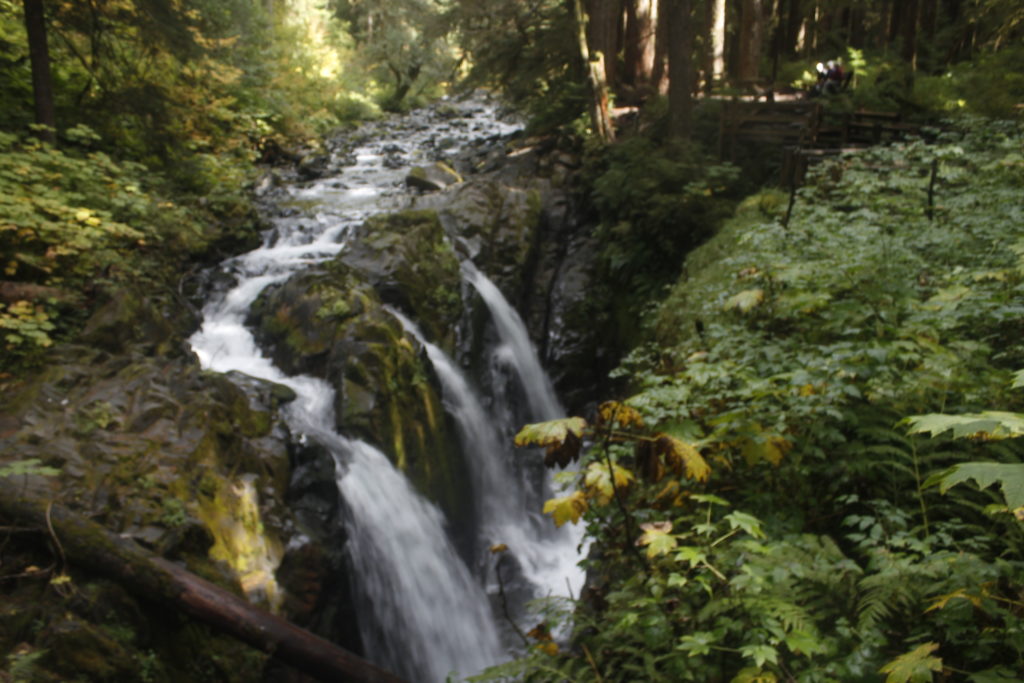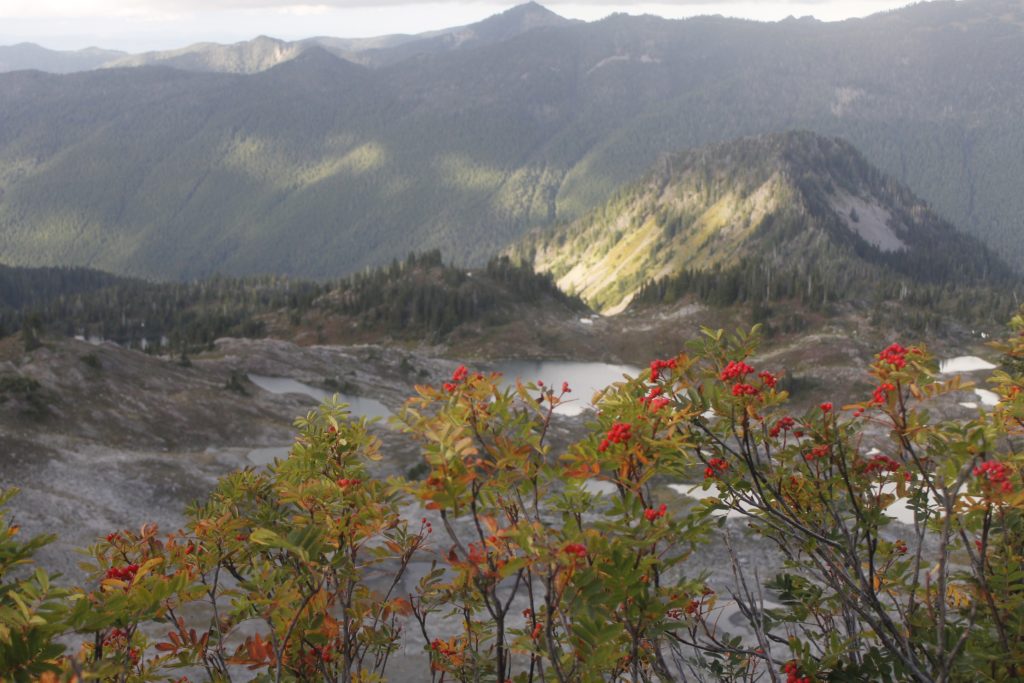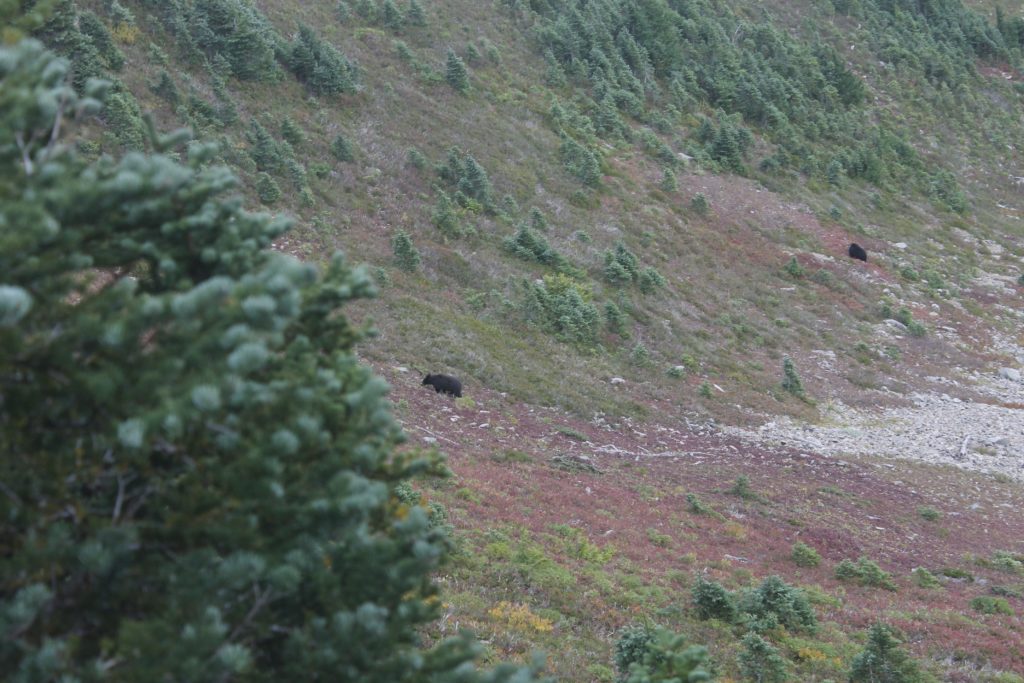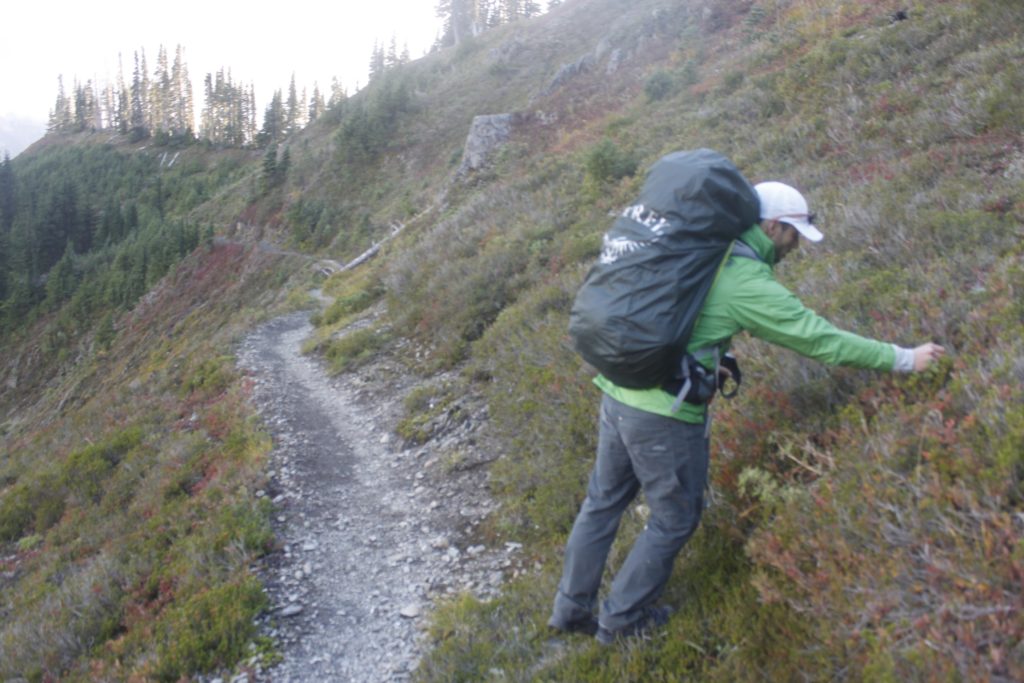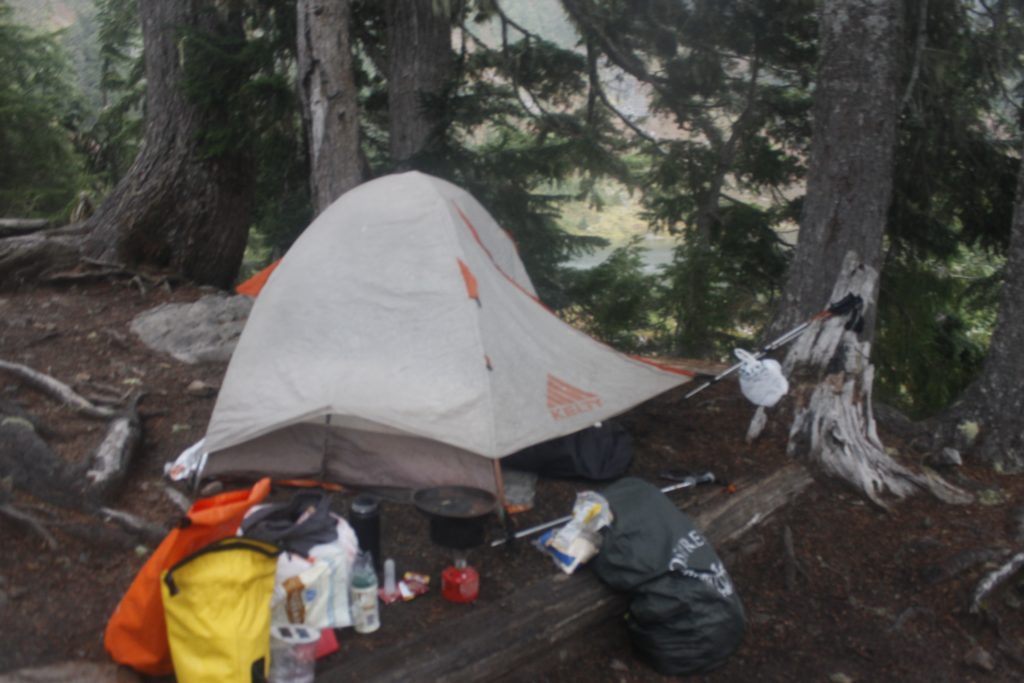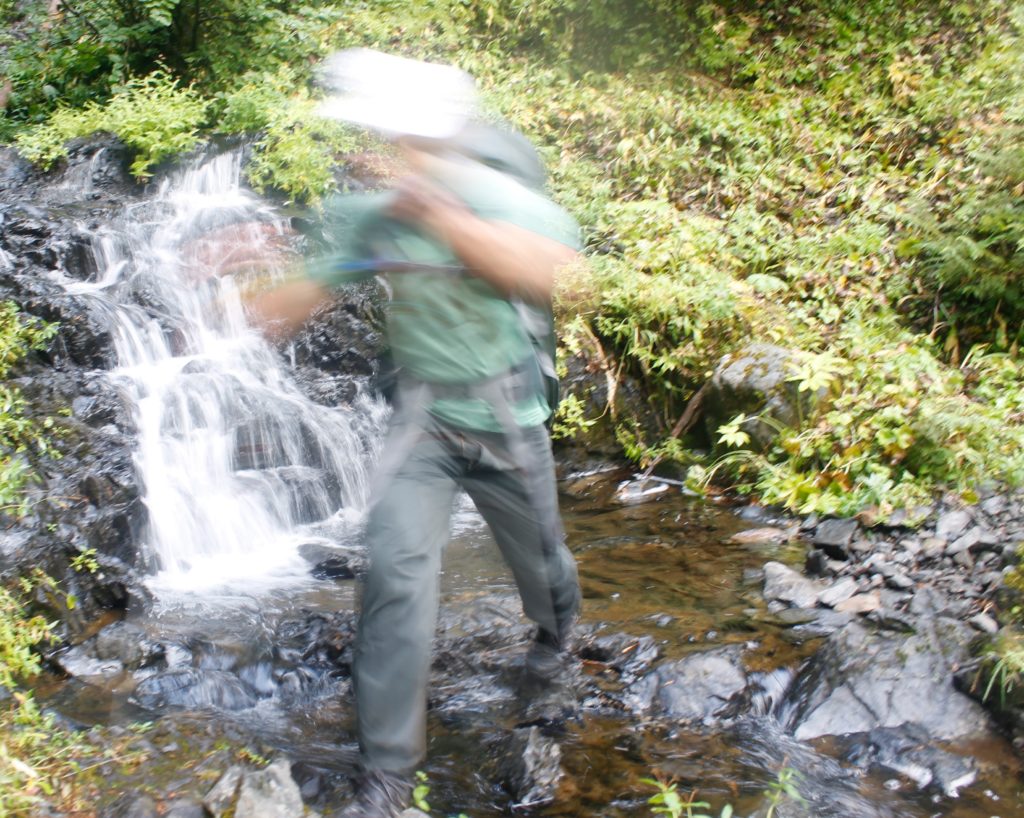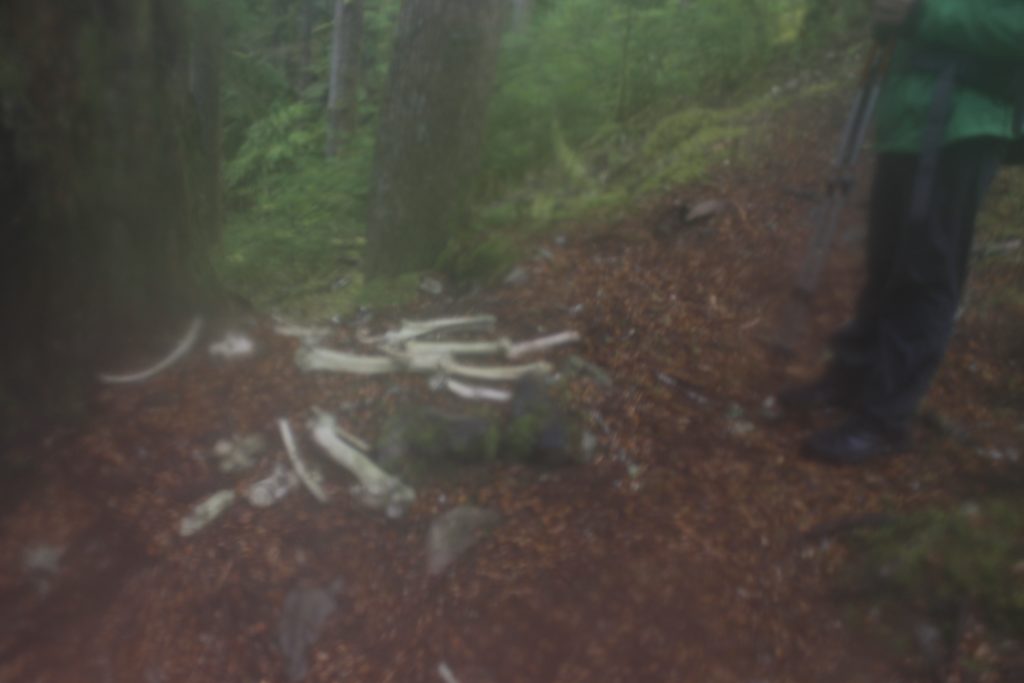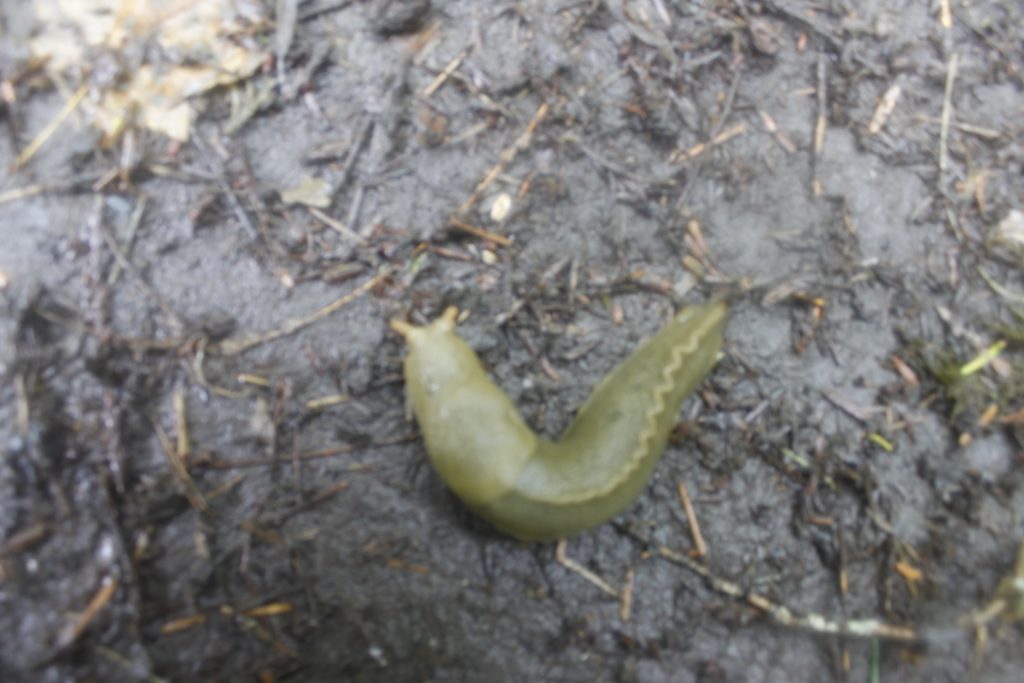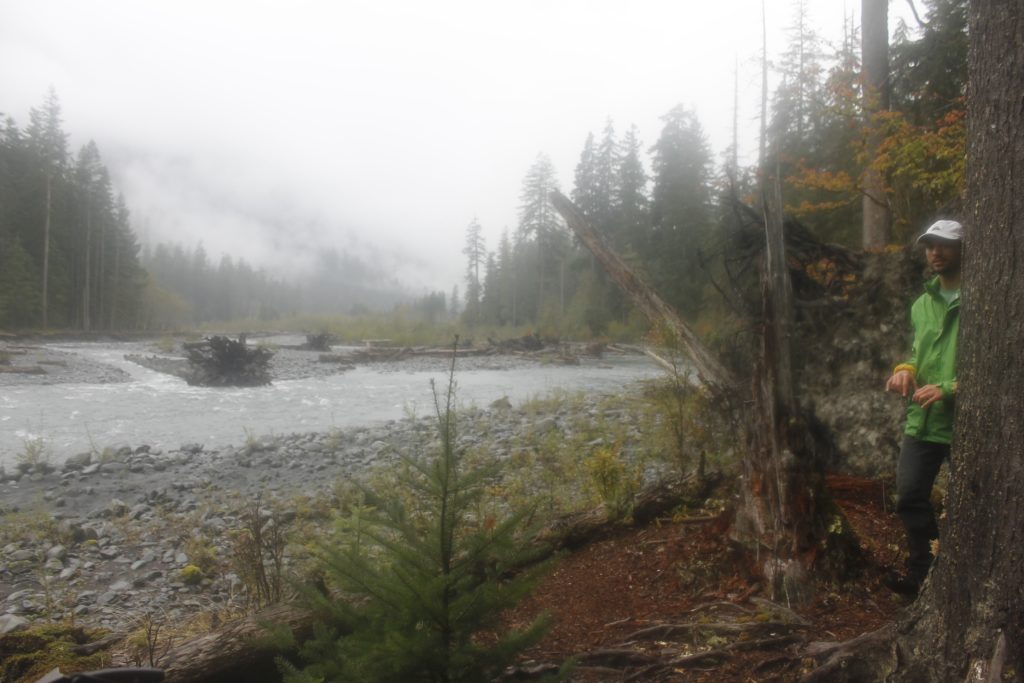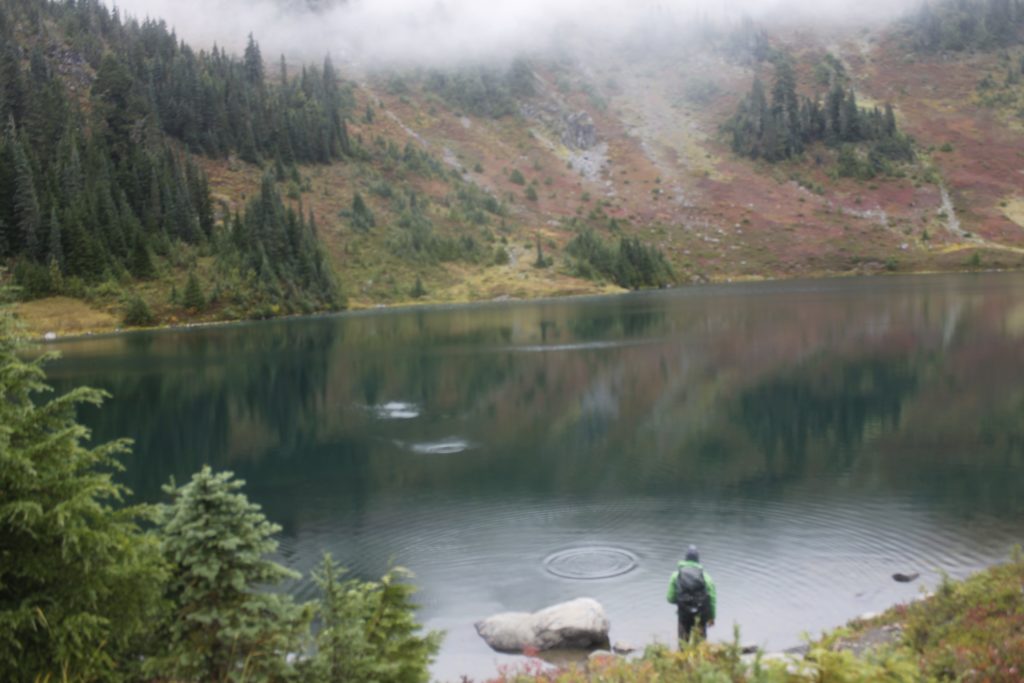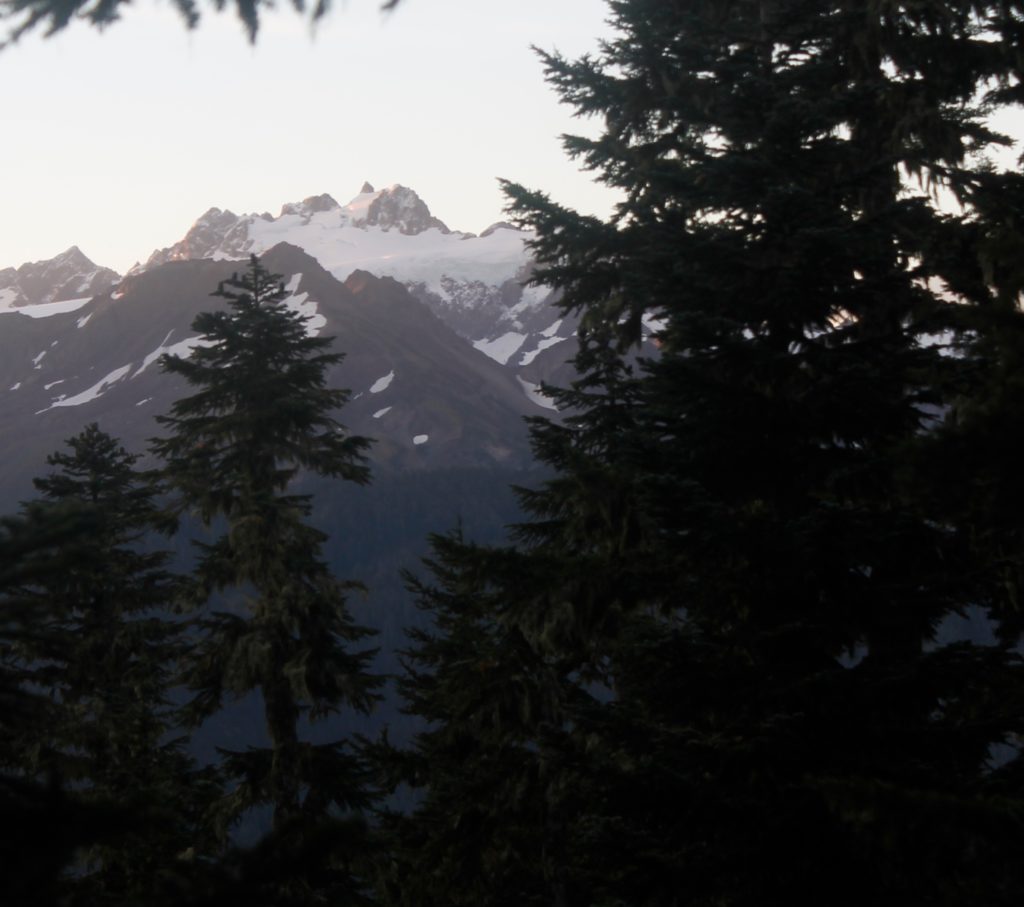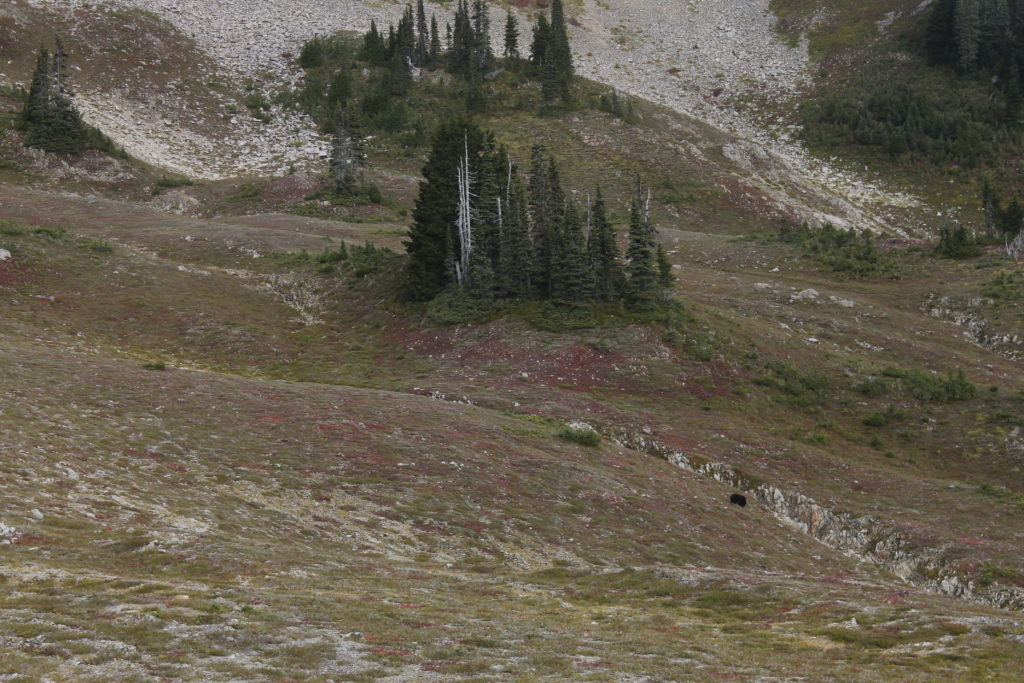There was the world of the pavement and there was everything else.
Pavement was the Hurricane Ridge Road, an asphalt tendril climbing out from Port Angeles, and penetrating into the Olympic Mountains. was is the accommodation that allowed the river of internal combustion to flow uphill — the shuddering swarms of Harley’s, Subarus, Tahoes and other vehicles to convey their day-trip passengers toward the snow realm up above.
They looked out of windows, and saw the other world: the treacherous stands of stinging nettles and shoots of devil’s club armed with vicious barbs, diaphanous leaves of the big leaf maple shifting iridescent in the sun mist. They were just starting the climb, these visitors. So was I.
I too, grunted and shuddered my up the pavement, and I did it in the lowest gear on my bike. The plan was to notch another entry in the doorstep chronicles with a doorstep ascent of Klahhane Ridge.
The ridge is 6,000 feet above Port Angeles Harbor. It forms what I think of as the most impressive feature you can see from town. Torturous layers of jagged stone jut up out of the ridge’s west side to create the 6,400 foot summit of Mount Angeles. Snow clings to the shadowed north slope, even in July and August.
I knew I was going to pedal long and hard to get there. I knew my back was going to ache and that I would loathe the traffic going past my bike. The bike ride was the part I wanted to get over with before I traipsed merrily up the trail toward Mount Angeles. I thought of all the cars going by as I kept the bike tires on the narrow margin.
But sometimes you sweat the climb a thousand times before the wheels start turning. As I started up the hill, I found myself in a pleasant frame of mind, enjoying the sun on my face. I let my eyes wander off the road and up the narrow gullies where pearly-white freshets cascaded over moss. Fat orange salmonberries grew in the roadside thickets, though they were not quite ripe enough to eat.
An occasional vehicle did perturb my reverie, but the traffic was far lighter than what I had feared. It had been dumb to spend so much energy climbing the mountain in my mind earlier.
After over an hour of climbing, I had knocked out about five miles, which brought me to the entrance station to Olympic National Park. I found a place in a rumbling line of vehicles, then kicked my bike along with the rest of the traffic inching its way toward the kiosk.
Eighty dollars later, I had a crisp new National Parks Pass in my wallet and was pedaling past thick-trunked Douglas Firs. The investment felt good, especially knowing the threat national parks throughout America face from the current president and others who follow his brand of thug-ignorance.
A vehicle stopped ahead of me so that passengers could click at a doe and her two fawns — the size of puppies with delicate white spots along their flanks. These park deer registered minimal concern about my bicycle or the other traffic along the road. I hoped no one had been feeding them, but the world is rich in well-meaning fools.
The lush understory from the lower elevations dropped away to thinner pine forest, with long views across the valley to Blue Mountain and the snow covered face of the Obstruction Point ridge. Day-trippers wandered from their cars to get in front of the views.
“You must be a glutton for punishment,” one woman called after me as I chugged by with my heavy pack.
“I’m loving it out here,” I called back.
Fifteen miles and 4,000 feet after I left my doorstep, I pulled my bicycle up to the trailhead for the Switchback Trail. I immediately peeled out of my soaked shirt and replaced it. A couple of peanut butter banana wraps were the calories I needed before the hike. Water gushed down the mountain valley, melting off the thick patches of snow higher up the way. A guy plodded down the trail with a pair of skis on his back. A minute later, his daughters caught up with him, also with skis.
“How was it out there?” I asked.
It was skiing for the sake of novelty at this point, the man admitted. They had found mushy snow that tended to cave in near rock outcrops. The biggest worry was the fog, which was still wrapped around the mountains higher up. There were no regrets about getting up there though.
The beginning of the Switchback Trail was a muddy line zigging up between stands of Alaska yellow cedar and mountain meadow. Tiny alpine flowers were coming into bloom. Groups of black-tailed deer meandered lazily through their forage, with velvet on their antlers.
I encountered snow gradually, then all at once. A few patches over the trail, became large swaths where other hikers had kicked steps in for traction. No need for me to get the crampons out yet. I did use an ice axe to cut up a couple of switchbacks on the snow.
Typically, cutting switchbacks is a hiking sin, because it tramps out vegetation and can cause erosion. In this case, the snow absorbed the impact of my waffle stomping feet and I could proceed guiltless.
Still, the axe and crampons proved to be overkill for the expedition, where the majority of the climb was snow free.
By the time I reached the crest of Klahhane Ridge, the clouds had closed in thoroughly. This was my turnaround goal, Climbing to 6,000 feet from my home at 300 feet above sea level wasn’t such a bad day. Yet, I knew I could go further. Last year, I had taken a little used side trail up to one of the peaks of Mount Angeles. The tallest peak (which I’d also climbed last year) would be out of reach from this approach, but I would still be at almost the same height of 6,400.
The ridge divided the mostly snow-free area where I hiked, from an entirely different world on the north face. Here, in the shadows, I could peer over a 45 degree slope, where a chest-deep slab of winter snow held onto the rock. Peering down, the white snow blended seamless into the nothingness of the cloud layers. It was impossible to tell where one ended and the other began. The depthless white concealed danger as well as or better than darkness would. I understood why the skiers had been freaked out.
Still…what a ride it would be. All I had to do is hop over the edge, and start sliding on my butt. I’d gather speed — tremendous speed — as I flew into that great white unknown with the ice axe as my only brake. It was a thought that was as terrifying as it was appealing. I thought of Herman Melville who wrote a whole chapter in Moby Dick regarding the terror of white:
“…there yet lurks an elusive something in the innermost idea of this hue, which strikes more of panic to the soul than that redness which affrights in blood.”
The rock scree on the south side of the mountain was enough excitement for the blood right then. The slope looked like a cake turned on its side, with various shales, sandstones and basalts that were bastard children of volcanism and ocean floor upheaval. The rock was pulverized into bits and pieces. I kicked my boots in for purchase in pencil shards of shale.
The basalt was more solid, but still dicey. I test wiggled every hand hold before I put weight on it. Often I would find a toaster-sized rock, just waiting to tumble down slope. When I had the chance, I used my axe to “dry tool” out holds in the rock above me. There were even a couple of snow slopes, that I used the axe for, though I didn’t bother putting the crampons on. Carrying them up 6,000 feet of mountain was just my way of making sure I got the proper dose of exercise that day.
Eventually, the rock got more technical — as in technically, it was class IV climbing if that sounds impressive. I ditched the backpack, and scrambled my way up the last section to a lookout slab.
The clouds hid plenty, but I also saw a good amount of the June snow slopes to my north. The concealing nature of the fog made the jagged landscape more mysterious and menacing. I grinned in the wind for a couple minutes, then started down.
Descending the scree was predictably unpleasant. I placed little trust in any one footfall. Still, I got a little fun out of glissading down a couple snow slopes. I got a little too ebullient on one of these jaunts, and missed my chance to sink my axe in before the snow went out. The result was a bit like coming to the end of a waterslide to find that someone had replaced the pool with a gravel pit.
I emerged slightly battered and slightly humbled, to hike the rest of the way down the Switchback Trail (and glissade a few more snow slopes.) Though I had hauled heavy snow pants up this far, I didn’t bother putting them on. Instead, I worked on a new glissade technique, sliding backwards on my hands and feet with the axe twisted sideways. When it was time to hit the brakes, I turned the axe into the snow. The method worked OK, for the short sections that I had to deal with, though my hands were thoroughly chilled in their thin gloves.
Near the bottom of the trail, I took a moment to sit on a boulder, while clouds parted and mountains strobed in and out of the early evening light. I let myself breathe in satisfaction. These are moments that reaffirm that adventures, even day trips, have unfathomable worth to me. More and more, I have begun to believe in the Doorstep Adventure and I want to take more of them. If I cannot be in the places I love most, without putting money in the pockets of the people that destroy them, perhaps I don’t deserve to be there.
And it is important to find an equal measure of joy to the hardship that comes with getting into wild places without an automobile. Otherwise, why the hell did you bother coming out?
If you drive up to Hurricane Ridge and have a crappy time, you wasted a couple hours and a few dollars’ worth of gas. No biggie. Hey, let’s catch a movie sequel at the theater.
If you bike, hike or run from sea level, you better enjoy yourself out there, or else you just squandered a day’s worth of time and effort. So you have a good time.
The bike ride up had been fun for sure. The ride down was a complete blast: 14 miles of (almost) unadulterated descent. I leaned my way past curves and through mountain tunnels, white knuckling it with fingers on the brakes. I used the brakes as little as possible.

